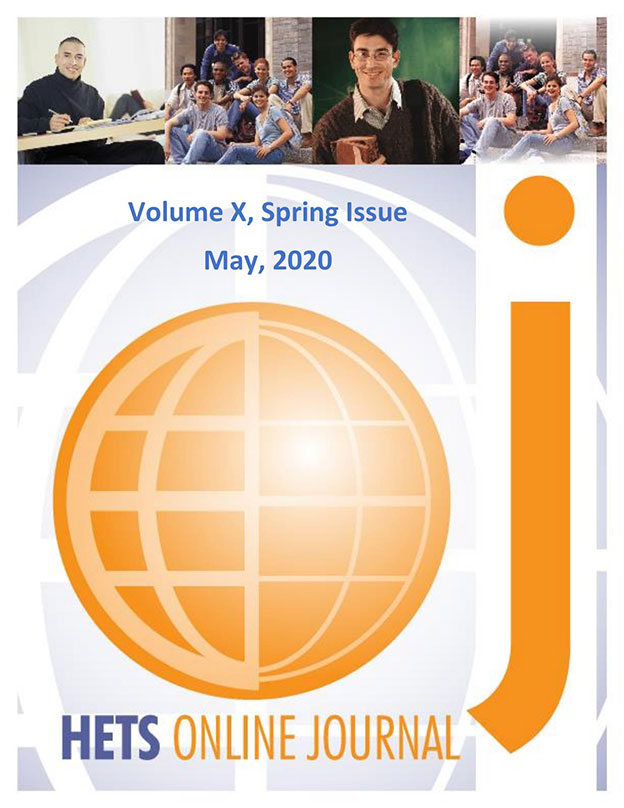Evaluating the Effectiveness of a Hybrid Developmental Reading Course at One Urban Community College: A Quasi-Experimental Comparative Study
DOI:
https://doi.org/10.55420/2693.9193.v10.n2.10Keywords:
English Language Learners, ELL, reading student barriersAbstract
Based on the response for the need to engage students in developmental reading, the purpose of this study was to examine whether a hybrid method of instruction has an impact on student reading achievement. To measure reading achievement, quantitative data in the form of student grades on end of the semester exit exams was collected. Data was analysed using dependent-samples paired t-test and the results indicated a significant impact on reading achievement: t=.360, p=0.011. Future research is needed to determine the impact of the hybrid method of instruction on developmental reading students in differing socioeconomic backgrounds and geographic locations.
Metrics
References
Agbatogun, A. O. (2014). Developing learners' second language communicative competence through active learning: Clickers or communicative approach? Educational Technology & Society, 17(2) Retrieved from http://go.galegroup.com.proxy1.ncu.edu/ps/i.do?id=GALE 7CA374101891&v=2.1&u=pres1571&it=r&p=AONE&sw=w&asid=c04222e55694ea02 a28e9a0adca2f93f
Attewell, P. Lavin, D., Domina, T. and Levey, T. (2006). New Evidence on College Remediation. The Journal of Higher Education, 77(5) 886-924.
Beetham, H., & Sharpe, R. (2013). Rethinking pedagogy for a digital age: Designing for 21st century learning. City: Routledge.
Brzeski, T. A. (2014). Advances in technology pave the path to actual learning: using blogging as a learning tool. HETS Online Journal, 5(1). 5-18
Conley, D. T., & National Center for Postsecondary Research, (. (2010). Replacing Remediation with Readiness. An NCPR Working Paper. 23.
Crook, D., Dreifus, E., Hofmann, E., Lucariello, J., Marti, E., Moy, R., & Wrigley, J. (2011). Proposals to improve success rates for students in developmental education at CUNY: Report of the working group on remediation. City University of New York Office of Academic Affairs. Retrieved from: www2.cuny.edu/wp-content/.../4/.../Report-of-the- Remediation-Working-Group.pdf
Dole, S. d., Bloom, L., & Kowalske, K. (2016). Transforming Pedagogy: Changing Perspectives from Teacher-Centered to Learner-Centered. Interdisciplinary Journal of Problem-Based Learning, 10(1), 45-58.
Gleason, B., & Greenhow, C. (2017). Hybrid Learning in Higher Education: The Potential of Teaching and Learning with Robot-Mediated Communication. Online Learning, 21(4), 159-176.
Harris, E. A. (2017). CUNY to revamp remedial programs, hoping to lift graduation rates. The New York Times. Retrieved from: http://www.nytimes.com/2017/03/19/nyregion/cuny- remedial-programs.html?partner=bloomberg
Hernen, T. A. (2016). Re-inventing remedial reading in the 21st century: a review of the benefits and challenges of a hybrid remedial reading course. HETS Online Journal, 6(2), 114-138.
Hodara, M. (2012). Language minority students at community college: How do developmental education and English as a second language affect their educational outcomes? (Doctoral dissertation, Columbia University).
Hodara, M., & Jaggars, S. (2012). An Examination of the Impact of Accelerating Community College Students' Progression Through Developmental Education. Journal of Higher Education, 85(2), 246-276.
Lehner, Edward; Thomas, Kaemanje; Shaddai, Jean; and Hernen, Toni, Measuring the effectiveness of critical literacy as an instructional method (2017). CUNY Academic Works. Referenced from: http://academicworks.cuny.edu/bx_pubs/22
Levin, H. M., & García, E. (2018). Accelerating Community College Graduation Rates: A Benefit-Cost Analysis. Journal of Higher Education, 89(1), 1-27. doi:10.1080/00221546.2017.1313087
Mo, S., & King, G. H. (2015). The Clock Is Ticking-An Analysis of Time Spent on Online Assignments. Academy of Educational Leadership Journal, 19(2), 129.
Nemeth, K. N., & Simon, F. S. (2013). Using technology as a teaching tool for dual language learners in preschool through grade 3. YC Young Children, 68(1), 48.
Office of Institutional Research and Student Assessment, Office of the President, Bronx Community College (2011). Retrieved from: http://fsw01.bcc.cuny.edu/chris.efthimiou/oirpa/Assessment.htm
O'Hara, S., Pritchard, R., Huang, C., & Pella, S. (2013). The Teaching Using Technology Studio: Innovative Professional Development to Meet the Needs of English Learners. TESOL Journal, 4(2), 274-294.
Olson, C. B., & Land, R. (2007). A cognitive strategies approach to reading and writing instruction for English language learners in secondary school. Research in the Teaching of English, 269-303.
Rosenthal BS, & Wilson WC. (2003). Impact of exposure to community violence and psychological symptoms on college performance among students of color. Adolescence, 38(150), 239–249. Retrieved from: http://proxy1.ncu.edu/login?url=https://search.ebscohost.com/login.aspx?direct=true&db =ccm&AN=106720775&site=eds-live
Townsend Press, Inc (2017): Townsend press learning center, Retrieved from: https://www.townsendpress.net/signup/choice
Yang, Y. F. (2012). Blended learning for college students with English reading difficulties. Computer Assisted Language Learning, 25(5), 393-41
Downloads
Published
How to Cite
Issue
Section
License
Copyright (c) 2022 Toni Hernen, Michael Shriner

This work is licensed under a Creative Commons Attribution-NonCommercial-ShareAlike 4.0 International License.
Open Access Policy Statement
HETS Online Journal has adopted an open access policy and provides immediate access to its content free of charge to the reader. The journal does not pass on the cost of publication or submission of manuscripts, known as an Article Processing Charge (APC), to authors.
HOJ is licensed under CC-BY-NC-SA.


